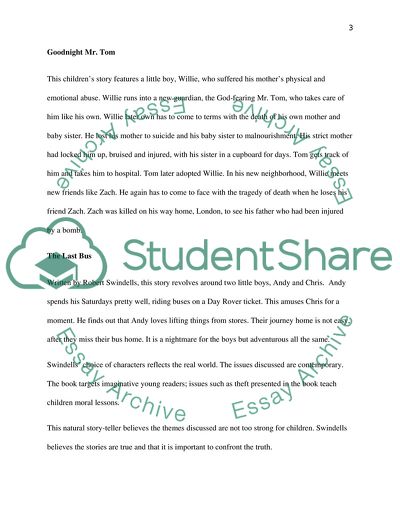Velveteen Rabbit, Goodnight Mr Tom and Last Bus - Ideal Books for Class Readership Literature review Example | Topics and Well Written Essays - 2500 words. https://studentshare.org/literature/1800832-a-report-on-childrens-literature
Velveteen Rabbit, Goodnight Mr Tom and Last Bus - Ideal Books for Class Readership Literature Review Example | Topics and Well Written Essays - 2500 Words. https://studentshare.org/literature/1800832-a-report-on-childrens-literature.


